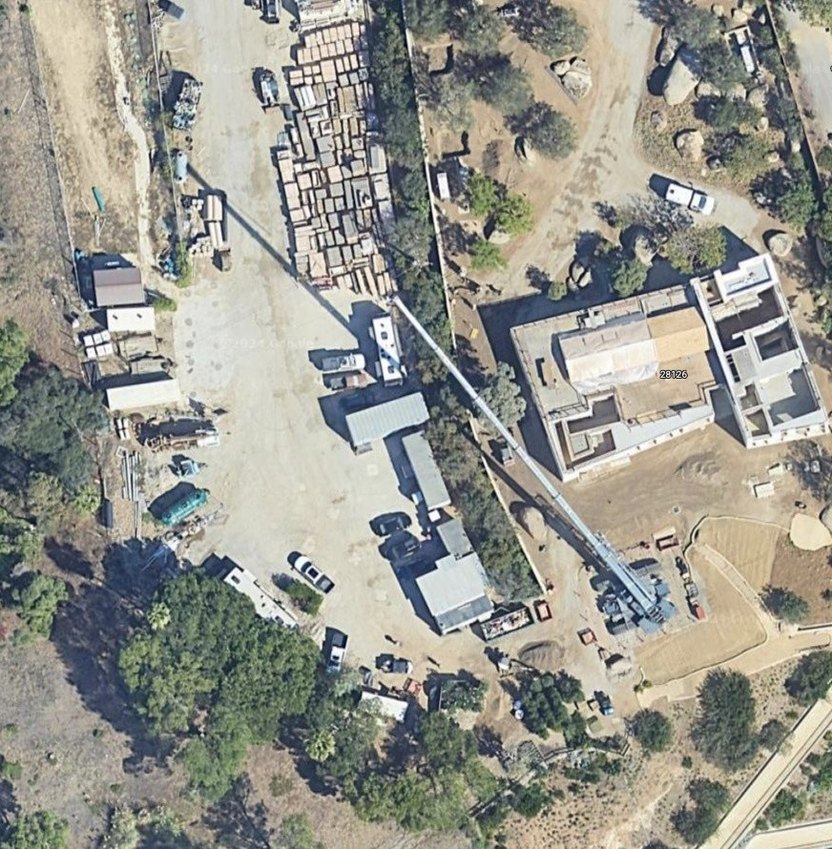At a time when high asking prices and mortgage rates have made homebuying more challenging than ever, one distinct market sector is still selling like hotcakes: megamansions that only the ultrawealthy can afford.
One recent sale of note: In June, billionaire James Jannard, the founder of Oakley sunglasses and apparel, sold his massive estate in Malibu for $210 million, setting a California record.
While the buyer’s identity remains under wraps from the public, this mystery owner now boasts the most expensive property in the state, beating out JAY Z and Beyoncé, who shelled out $190 million for a Malibu property last year.
In another noteworthy sale this June, Laurene Powell Jobs paid a whopping $94 million for a 9,810-square-foot, oceanfront Malibu property with a five-bedroom, three-bath home built in 1956.
She already owned two adjacent properties in the Paradise Cove area; a Google Earth photo of her domain shows it to be under construction.

A view from above of Laurene Powell Jobs’ latest Malibu, CA, land grab(Google Satellite)
And while Malibu is a perennial favorite among wealthy homebuyers, so are San Francisco, Aspen, New York City, Miami, and Palm Beach, FL. Each place boasts at least one sale among the year’s highest-priced transactions, all over $50 million.
Why is America’s ultraluxury market still going strong, even while the rest of U.S. housing market is just limping along?
Simply put, wealthy buyers play by a completely different set of rules, immune to many of the make-or-break issues that might prevent most mere mortals from buying a house.
So what do America’s richest homebuyers want, and how do they get it? We spoke with prominent agents and brokers in some of the country’s priciest areas, for a glimpse of what it’s like home shopping with many millions at your disposal.
Why wealthy homebuyers don’t care about climate change
Floods, fires, and storms may give most of us pause when we’re considering where to buy our homes—many of us can’t even afford to buy insurance in some places, if it’s available at all.
But the story’s a bit different for billionaire homebuyers.
“Homes in coastal areas, such as Palm Beach, are at risk of property damage due to climate-related events, which may deter some buyers,” says Realtor.com senior economist Hannah Jones. “However, ultraluxury home shoppers continue to flock to these areas.”
Extreme Florida weather patterns have been in the news a lot of late, but well-heeled buyers have less reason to worry.
“The new FEMA regulations and the requirements of insurance providers have really encouraged or mandated that developers and custom builders reach certain standards in terms of wind and flood protection,” says Margit Brandt, with Premier Estate Properties, Inc. in Palm Beach. “These improvements in the building code have prepared the region well for storms.”
While many regular homeowners may not be able to afford the latest hurricane-proof house, the wealthy can afford the very best in storm-prep standards.
Timing is yet another reason why the rich aren’t scared of hurricane season, which spans June through November: This is also when Southern coastal areas are at their hottest and stickiest—and when wealthy homebuyers typically kick back in their other mansion farther north.
“Most Palm Beach residents skip hurricane season [then fly down] after Thanksgiving,” Brandt points out. “Or they will often decamp back to their [northern] summer home by air if necessary.”

This 10-bedroom, 12-bath Palm Beach, FL, mansion is among the highest-priced properties sold this year, at $51,631,500.(Realtor.com)
In coastal areas, beach erosion is also an issue for many homebuyers.
“On beaches with erosion, the foundation systems are the most critical component,” says Sandro Dazzan, managing partner of The Agency Malibu. “Homes with newer concrete foundation systems, as opposed to the old wood piles from the 1950s to the 1980s, command a premium. High-end buyers tend to gravitate towards new builds with new concrete foundations and newer sea walls.”
When it comes to fires, Dazzan says his wealthy buyers look for homes with fire suppression systems and construction designed to withstand wildfires. They’ll also hire teams to clear the brush and plant fire-resistant vegetation around their estates.
“There are companies you can hire that will monitor your home and, in the event of a wildfire, will come to the property to defend it,” Dazzan says.
In other words, the rich can simply hire a private fleet of helicopters to put out any wildfires that encroach on their home—it’s the ultimate in peace of mind.
And despite the risks of climate disasters, these billionaire enclaves have unrivaled natural virtues that you just can’t get elsewhere.
“Ultrawealthy buyers are flocking to Malibu because of our beautiful rural environment and the incredible Santa Monica Mountain range that spans the entire city,” says Dazzan.
He recently sold one of the priciest properties of 2024—a stunning, newly built, 10,527-square-foot mansion with unobstructed access to and views of the Pacific Ocean. That, along with its proximity to the entertainment industry, attracted megamoney buyers. The place sold for $61 million.

Unrivaled, natural beauty and views, evident in this $61 million Malibu mansion, also draw affluent buyers.(Realtor.com)
He recently sold one of the priciest properties of 2024—a stunning, newly built, 10,527-square-foot mansion with unobstructed access to and views of the Pacific Ocean. That, along with its proximity to the entertainment industry, attracted megamoney buyers. The place sold for $61 million.

Unrivaled, natural beauty and views, evident in this $61 million Malibu mansion, also draw affluent buyers.
(Realtor.com)
Wide-open spaces are also of great value to elite buyers. This is evidenced by the number of billionaires who make ski-resort areas like Aspen their winter headquarters. It also explains the sale of this $59 million, 36.31-acre legacy compound this year.




